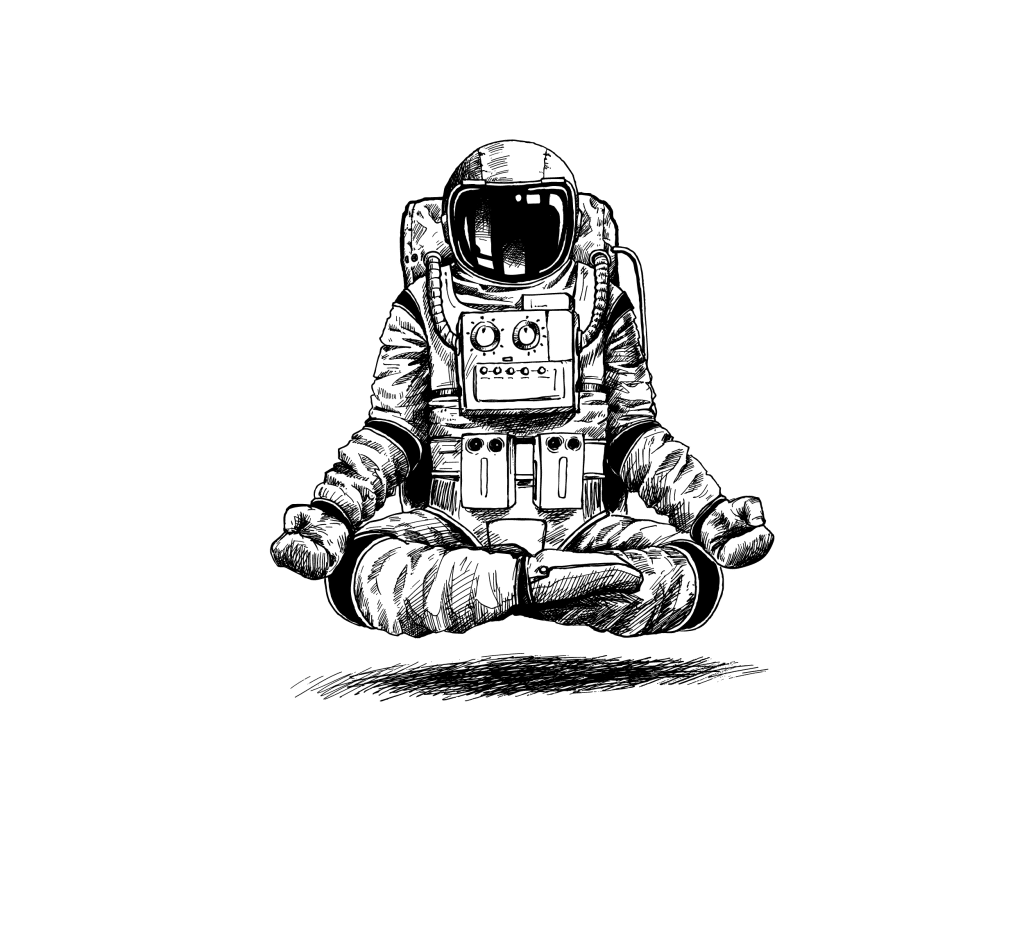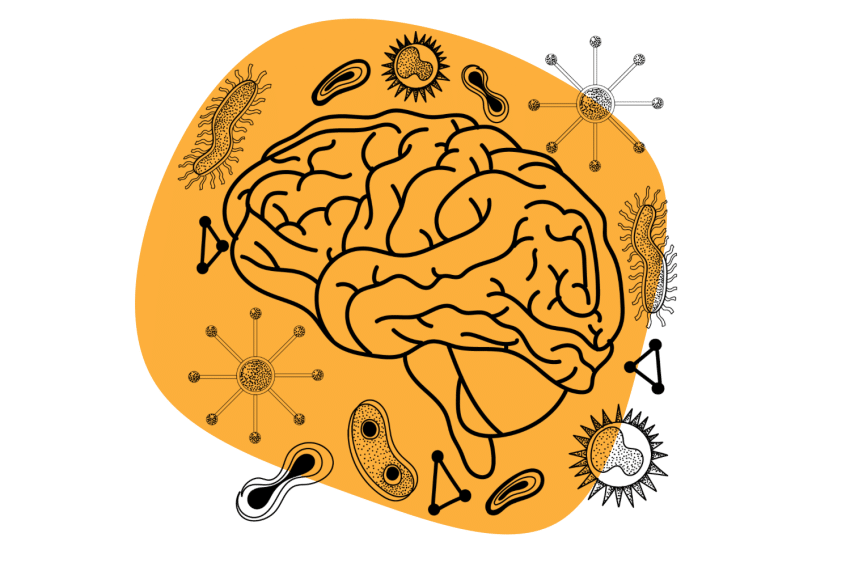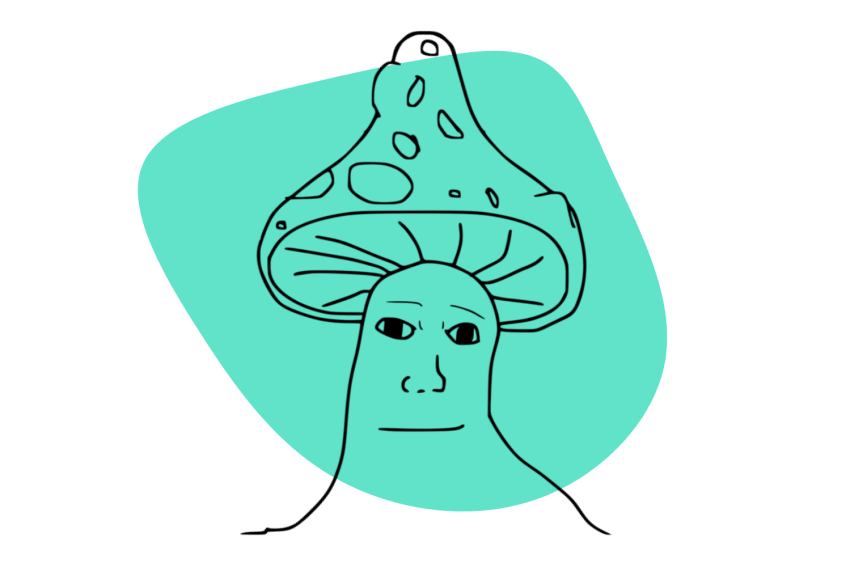Journey Beyond The Physical Body: An Introduction to Astral Projection
Astral projection is the act of divorcing the soul from the body to travel through different realms — is it real or all in the mind? 🌌
Astral projection is the intentional separation of one’s consciousness from their physical body for the purpose of traveling outside of it.
Practitioners claim they can train themselves to do this, allowing them to travel to the “astral plane” and explore the hidden realms of their subconscious mind or the world of spirits. Mainly, they accomplish this through intense meditation and visualization techniques.
While astral projection is popular in new-age spiritual practices, the basic concept has existed for centuries through various schools of philosophy and religions.
In this article, we’ll explore the history of astral projection, techniques for these out-of-body experiences, and criticisms surrounding new-age astral projection techniques.
The History Of Astral Projection Practitioners
Astral projection — or out-of-body experiences (OBE) — isn’t just a new-age hippy concept. Accounts of OBE exist throughout various ancient cultures and spiritual traditions.
Some of the earliest possible mentions of astral projection come from ancient Greek and Egyptian civilizations.
Ancient Egypt
The ancient Egyptians believed the soul and body were separate entities, and the soul continued to exist long after the body perished. They believed the soul consisted of multiple components.
Parts of the soul could leave the physical body and travel beyond it to visit the afterlife, communicate with gods, and return to the body unharmed. After death, the Egyptians believed the soul would remain, hanging above the body, while able to travel back and forth from the afterlife.
This was the driving force behind building the elaborate pyramids. Egyptians would bury people of note with their possessions and sacrifice their servants and pets so they could all remain in each other’s presence after death.
Ancient Greece
Consciousness was an ethereal entity in ancient Greek mythology. They believed the soul could detach from the body to travel to the underworld — the residence of the dead.
Plutarch
The ancient Greek historian and philosopher Plutarch described an iconic tale of this out-of-body experience through the first-century parable of Aristeu. In it, Aristeu suffered a head injury resulting in a coma that lasted several days.
During this time, Plutarch reports his soul to have separated from his physical body and floated outside of it. Aristeu encountered a spiritual guide who led him through an intense spiritual transformation in this state.
At the end of this journey, Aristeu adopts a new perspective on life, changing his ethics and behavior. Essentially, his experience and results represent the goal of successful astral projection journeys.
Plato
We can’t fly past the history of astral projection without mentioning Plato.
In his book The Phaedo, Plato wrote about out-of-body experiences, exploring the nature of the soul and the afterlife [1]. The book’s setting is a philosophical dialogue between his late mentor Socrates and his disciples on the day of his execution.
Socrates argues for the soul’s immortality, stating it exists before and after death, unbound to the physical world. He also believed that after separating from the body, the soul could experience pure forms and ideas normally inaccessible due to the physical body’s limitations.
Ancient India
In Hinduism lies the belief in multiple levels of reality — or “lokas” — including physical (earthy) and astral realms. According to Hindu philosophy, the astral body comprises the conscious mind and life force, which is distinct from the physical body.
This autonomy means it can exist independently of it.
They believe separating the astral soul from the physical body is possible through meditation and yogic practices such as pranayama (breathing techniques) and pratyahara (turning your attention inward).
After this, the individual can explore the astral realm, where they’ll gain insights into the true nature of reality and communicate with deities and spirits for guidance and healing.
Where Did The Term Astral Projection Come From?
Several indigenous traditions, like shamanism, Santeria, and Voodoo, seek out-of-body experiences through drumming, singing, meditation, and entheogenic drugs. Even non-intoxicating methods can alter consciousness, and they did this to seek communication with gods and ancestors, spiritual guidance, healing, and divination.
However, the term “astral projection” didn’t come about till much later in the 19th century with the advent of the Theosophical Society. Theosophism was an eclectic spiritual movement of philosophy and science, drawing from many ancient religious traditions.
Hinduism, Buddhism, and Christianity, as well as elements of mystical and esoteric practices like alchemy and astrology, came together to form this new practice. The term “astral” refers to the non-physical world, with the goal of the practice being to “project” one’s consciousness to this non-physical location.
The theosophists taught astral projection through literature and lectures throughout Europe and the United States. Helena Petrovna Blavatsky, the founder of the Theosophical Society, describes astral projection and methods for practicing it in her books, The Secret Doctrine and Isis Unveiled [2,3].
These works popularized the ancient teachings of these intentional out-of–body experiences for the modern era and contributed to the new-age movement.
How To Astral Project
There are various schools of thought surrounding astral projection. Let’s explore some of the most common techniques for inducing an out-of-body experience:
Meditation
Meditation is the most common practice for astral projection — but don’t expect to gain your “astral passport” with ease. Preparing the mind and body for this experience takes years of regular practice.
If you don’t already have a meditation routine, consider starting with guided meditation videos and apps to help quiet the mind and enter a relaxed state. Those with a more established personal meditation practice may find it easier to enter a trance-like state.

When you can reach this place, visualize the spirit leaving the body — some say this looks like a subtle light or produces a feeling of warm energy slowly rising from the body. According to practitioners, this is the entrance to the astral plane.
Once successfully split from the body, you can explore the world around you and interact with objects or other beings.
Entheogenic Drugs
Many consider psychedelics like injecting yourself into the astral plane via warp drive. Powerful psychedelic drugs such as ayahuasca, psilocybin mushrooms, and peyote cactus have ancient indigenous histories of altering states of consciousness to enter spiritual realms for healing, self-reflection, and ceremony.
A shared experience with classic psychedelics is ego death, a self-dissolving feeling and a merging with a larger, universal consciousness. In some ways, the experience of ego death — with altered consciousness and other-worldly feelings — is similar to astral projection.
Psychedelic drugs have much less predictable outcomes than meditation routines and may even lead to psychological trauma for some people. If you want to use psychedelics for astral projection, consider exploring options with a qualified therapist or shaman first.

Sensory Deprivation
Removing the stimuli to your body’s senses may aid in inducing an out-of-body experience. By removing a layer of distraction, entering a state of deep relaxation and heightened spiritual awareness is easier.
Methods of sensory deprivation include a sensory deprivation tank (floatation therapy) or lying in a dark, quiet room wearing noise-canceling headphones while meditating. Reducing external distractions that tie the spirit to the body may help you move beyond the physical body.
Yoga
Pranayama is a breathwork yoga practice controlling one’s “prana” or life-force energy. This involves concentrated breathing techniques to eliminate distracting thoughts and intense visualization of bodily detachment.
Some pranayama techniques involve fast, rhythmic breathing, while others involve slow, deep breathing. Manipulating the oxygen and carbon dioxide in the body can induce mild hypoxia — low levels of oxygen — leading to a range of mental and physical effects.
The results of breathwork may include heightened awareness, altered perception, and euphoria. Enjoy this work on its own or before a session of meditation.
Accidental Out-of-Body Experiences
The goal of astral projection is to travel to astral planes intentionally, maintaining self-awareness for personal growth. However, there are times when out-of-body experiences occur spontaneously.
Accidental out-of-body experiences can result from severe emotional states like near-death experiences or other physical trauma. OBEs occur in roughly 10% of the population, and neurologists believe the cause is a “disintegration between personal space … and extrapersonal space … due to interference with” certain brain parts [4].
Psychonauts may recognize this “disintegration” between the body and the space around it as ego death.
What Does Astral Projection Feel Like?
There’s no current research on the practice, and accounts of OBEs vary from person to person. However, there are some common threads in these accounts:
- A sensation of floating above their physical body
- A sense of detachment from the body
- Buzzing sensation in their astral body
- Feelings of weightlessness
- Hallucinatory visual experiences (bright lights, vivid colors, geometric patterns)
- Ringing noises
Common Beliefs Associated With Astral Projection
Intentional out-of-body experiences have been a part of cultural and spiritual traditions all over the world — and they seem to share interesting commonalities. Many believe astral projection is a powerful tool for self-discovery, improved mental and physical health, and increased spiritual insight.
For the most part, practitioners claim this is through contact with higher forms of consciousness like deities, unexplainable beings, and their ancestors. Others believe they can access their spirits’ past lives and memories or tap into a “universal consciousness” for insights into their current life.
Is Astral Projection Real? Criticism of Astral Projection
As a spiritual practice, astral projection has no support from the scientific community. Astral projection lacks scientific validation and may result from physical factors rather than spiritual ones.
Namely, things like mental health issues, brain malfunctions, and the effects of substance use.
The scientific community considers OBEs to be visual hallucinations where the person sees themselves and their surroundings from a third-person perspective. Another term for this might be depersonalization or derealization.
In this state, a person feels disconnected from their body and surroundings, experiences unusual bodily sensations, and often displays a lack of emotional response. Various factors can trigger this hallucination, from sleep deprivation, drug use, near-death experiences, medical conditions, and psychotic disorders [5].
The Military’s Remote Viewing Program
During the 1970s–80s, the United States military had a highly classified program investigating the use of astral projection and other psychic abilities to gather intelligence. This program involved training individuals to use extrasensory perception to gather information from remote locations using meditation, drugs, and other techniques.
The Remote Viewing program ended in the 1990s and was secret for many years until the Freedom of Information Act came about. Some claim it wasn’t very useful, while others believe it had some success.
If you want to learn more, the documentary Third Eye Spies covers it thoroughly.
Related: What Was Project Stargate?

Lucid Dreaming Versus Astral Projection
Lucid dreaming and astral projection are two distinct concepts with many similarities regarding consciousness exploration. Lucid dreaming is the state of being aware you’re dreaming while asleep as opposed to an astral projection while awake.
During a lucid dream, you can control the dream environment and explore the inner workings of your mind. This can occur spontaneously, or some may implement techniques to increase the likelihood of experiencing lucid dreams.
Astral projection, however, attempts to separate one’s consciousness from their physical body to travel the world and access alternate dimensions. Practitioners believe astral travel is a standalone experience where they’re traveling to a separate place — outside of the body and mind.
Astral projection also often involves intense meditation and visualization techniques to separate the spirit from the physical body.
Some people believe the conscious mind is capable of experiencing the astral plane through meditation, enabling them to explore the hidden realms of their subconscious.
However, out-of-body experiences can also come about spontaneously.
Conclusion: How to Start Astral Projecting
The best way to participate in astral projection safely and reliably is through consistent meditation practice. While it’s not the fastest route, it’s the one that will yield the best results.
Psychedelic drugs may be quicker, but without the practice of meditation and self-reflection, nobody can traverse these realms well. Meditation grounds practitioners and strengthens their emotional and psychological resolve, benefiting anyone looking to travel to different realms or maintain their presence in this one.
If you seek out other options for astral projection — like using psychedelics — prepare for your trip with them through intention, grounding, and meditation to increase their effectiveness. Mindset plays a large role in the psychedelic experience, and nothing is better for the mind than rest, silence, and openness.
References
- Hackforth, R. (Ed.). (1972). Plato’s Phaedo (Vol. 120). Cambridge University Press.
- Blavatsky, H. P. (2016). The Secret Doctrine. Penguin.
- Blavatsky, H. P. (1997). Isis Unveiled: Secrets of the Ancient Wisdom Tradition. Illinois: Quest.
- Blanke, O. (2004). Out-of-body experiences and their neural basis. Bmj, 329(7480), 1414-1415.
- Mudgal, V., Dhakad, R., Mathur, R., Sardesai, U., & Pal, V. (2021). Astral Projection: A Strange Out-of-Body Experience in Dissociative Disorder. Cureus, 13(8).







